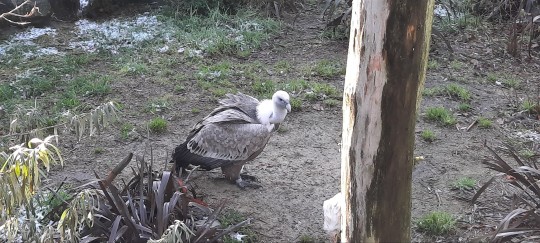#overloon
Explore tagged Tumblr posts
Video
african lion overloon 3L0A0978 by safi kok
#animal#Africa#afrika#Afrikaanse leeuw#african Lion#mammal#zoogdier#dier#predator#panthera leo leo#Leeuw#Lion#overloon#flickr
71 notes
·
View notes
Text
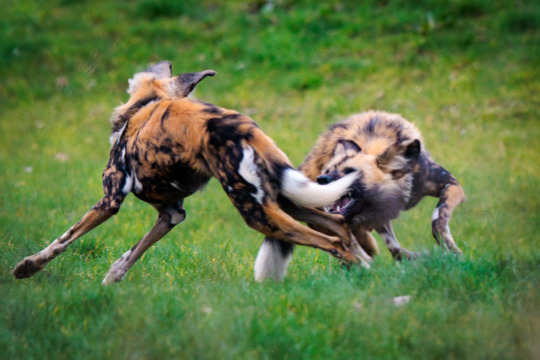
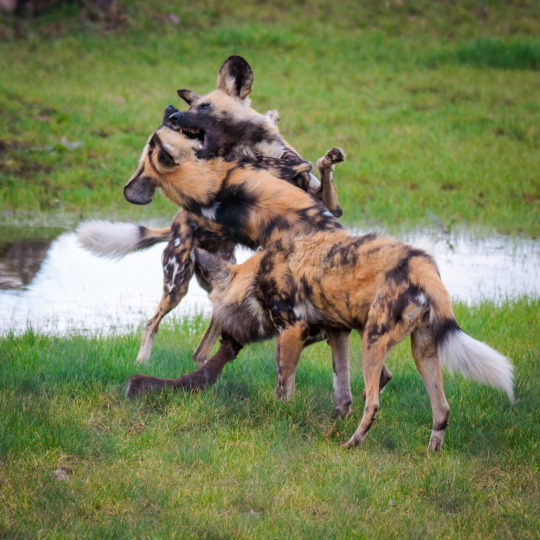
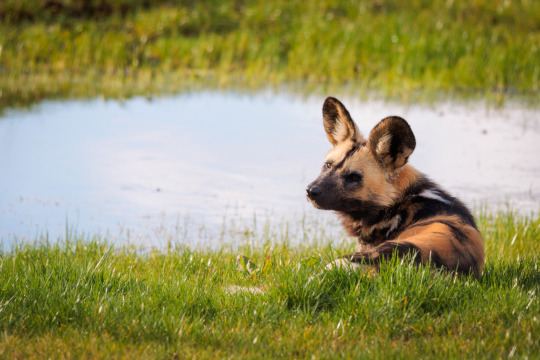
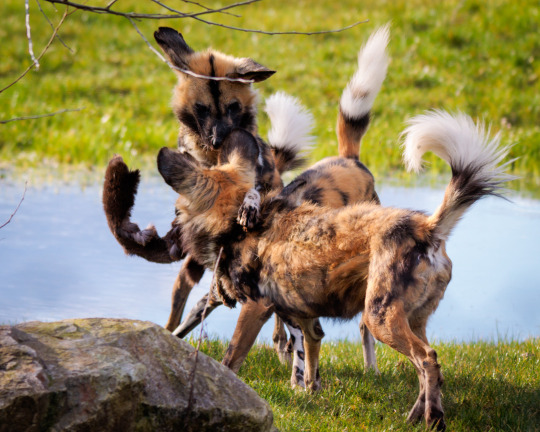
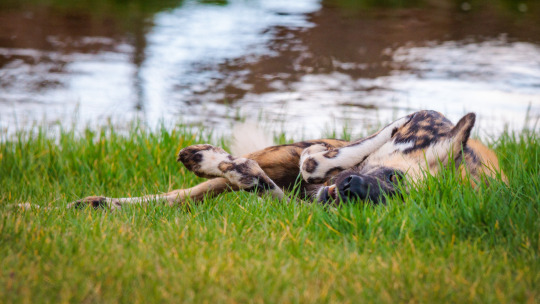
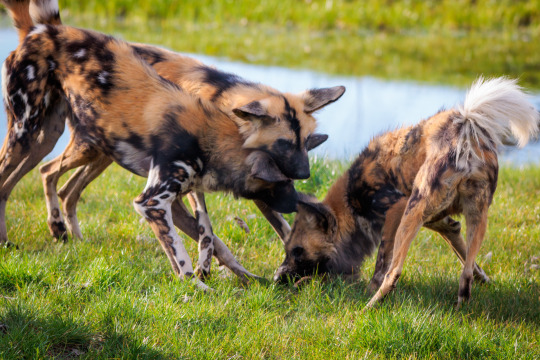
#ZooParc#Overloon#Zooparcoverloon#Photography#Photo#Zoophotography#zoo#animal#animals#animalphotography#African#wild#dog#Lycaon#pictus#wilddog#africanwilddog#Dogs#canines#canine
92 notes
·
View notes
Text

Bild des Tages: In Overloon
0 notes
Video
Kroeskoppelikaan. by Wim Jacobs Via Flickr: ZooParc Overloon.
#Nikon D7200#Nikon#D7200#AF-P NIKKOR 70-300mm f/4.5-5.6#ZooParc Overloon.#zooparc#dierentuin#Overloon#Limburg#Nederland#Netherlands#flickr
0 notes
Text
Overloon | Geschiedenis herleeft in Oorlogsmuseum
Dinsdag, 21 mei 2024 | Op een bewolkte dinsdagmiddag stap ik het Oorlogsmuseum in Overloon binnen, een plaats waar geschiedenis tastbaar wordt en de verhalen van oorlog en vrede tot leven komen. Het museum, gelegen in een bosrijk gebied, ademt een serene maar tegelijkertijd respectvolle sfeer, passend bij de herinneringen die het bewaart. Bij binnenkomst word je begroet door een indrukwekkende…
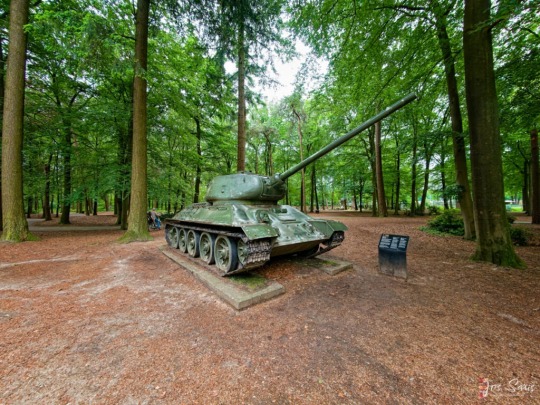
View On WordPress
0 notes
Text

Last remaining A30 Challenger tank destroyer at the Overloon Museum, Netherlands.
24 notes
·
View notes
Photo
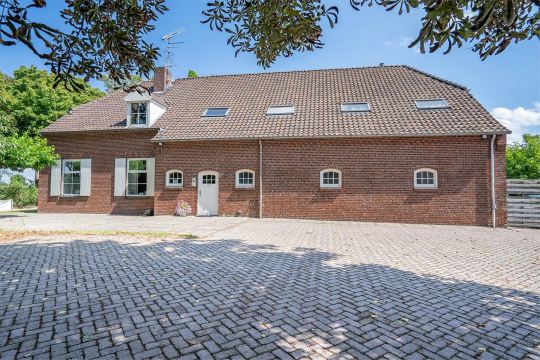
Ingek73 found this extremely unusual home conversion in the Netherlands. They are calling it a farmhouse, but it’s been renovated several times and the main building was for Naturopathy / acupuncture, and the salt room is still here, so if you want a salt room, this is the home for you.

The back of the building was where the stables were. It has 9 bds., so the whole gang can have the spa experience. €1,175,000 / $1.276M

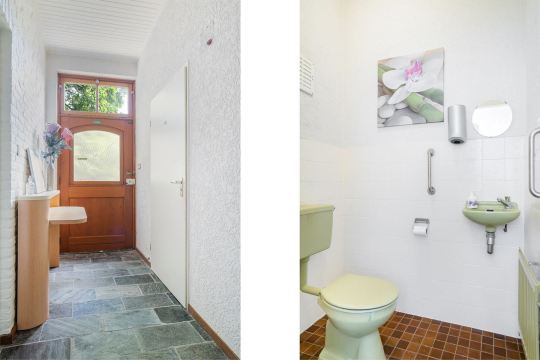
There is a loo conveniently located right inside the main entrance. (Who doesn’t wish they had one from time-to-time?)
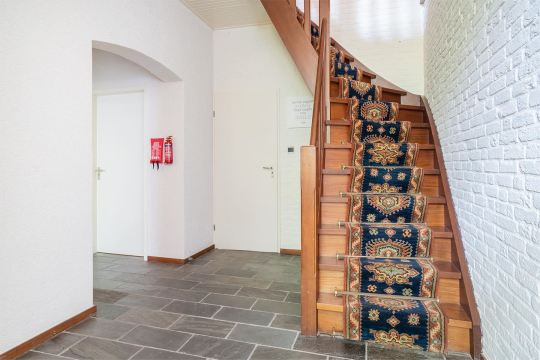
Then there are stairs with a pretty carpet runner- they whitewashed the brick, which I’m not sure I like.
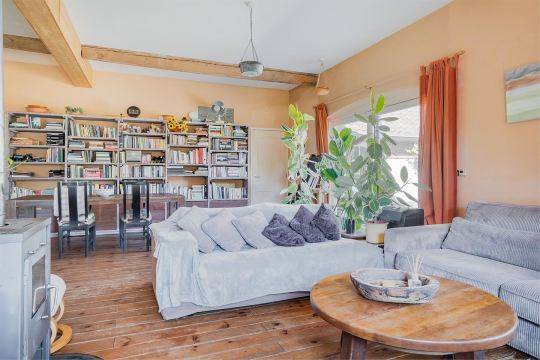
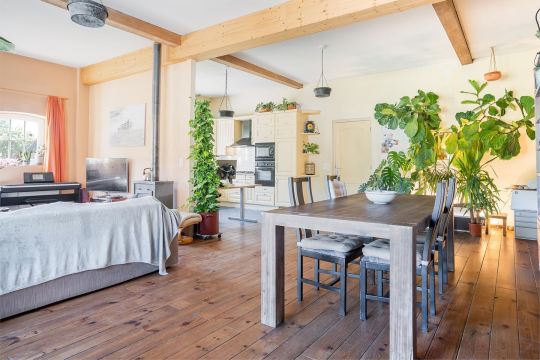
They made a lovely, spacious living/dining room combo- love the soft color and ceiling beams.
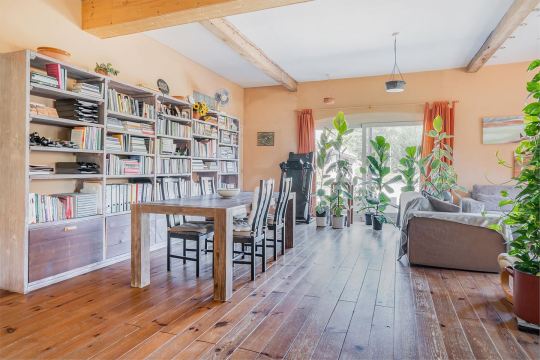

Love the mature plants. Do they convey?

On the other side of the living room wall, in an open space design, is the kitchen.
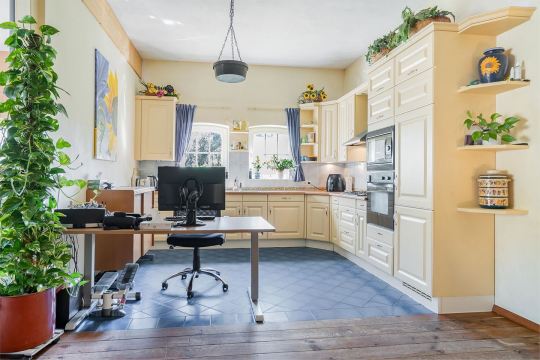
Love the creamy cabinetry, but they must be multi-taskers w/the computer setup in the kitchen.
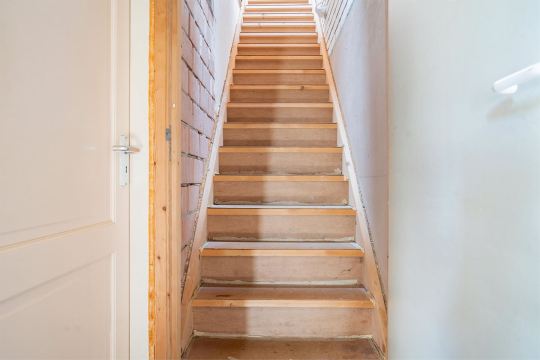
A 2nd set of stairs to the upper floor.

Not lovin’ this tile, but I never liked brown. It’s still a nice shower room.

The one has a bath and very pretty tile.

Bd. with skylight and access to the outdoors.

Walk-in closet.
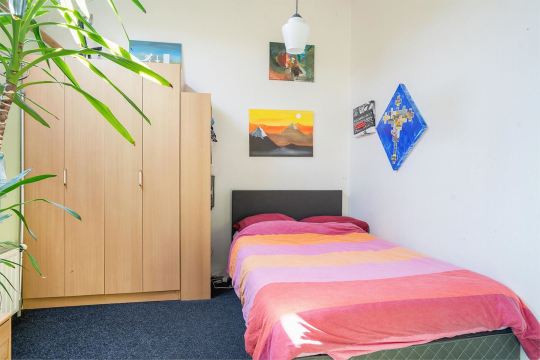

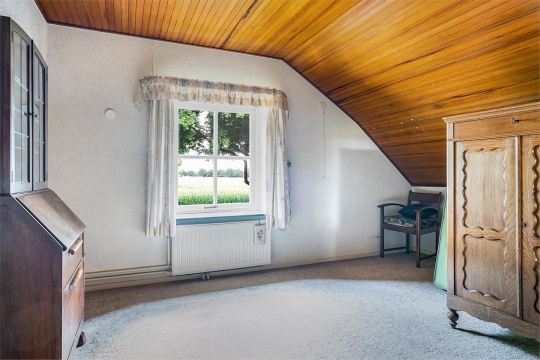
All 9 bds. are bright and have closets. Some have beautiful wood ceilings.

This part of the home has exposed brick and barn-like ceiling beams.
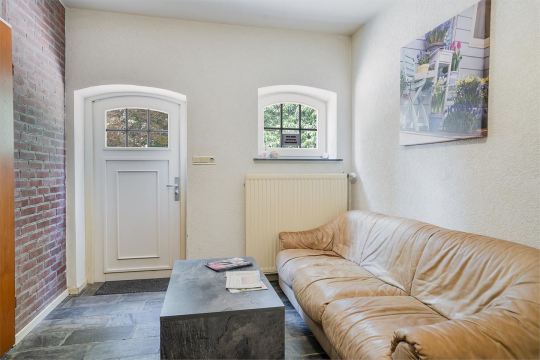
This looks like the waiting room for the naturopathy practice.

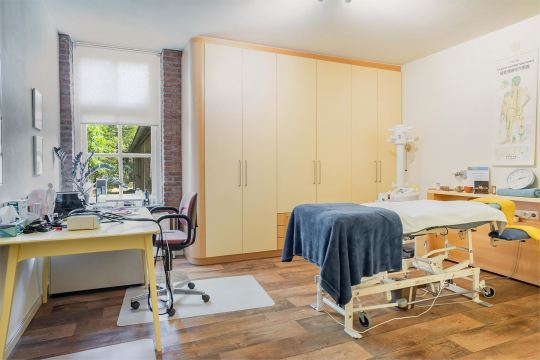
See? Treatment rooms and supplies. Does this convey?

The loo- some of the salt is stored here.


And, here’s your salt room.



This barn definitely has possibilities.

I bet this junk conveys. Look at the solar panels.



It’s a very large property with lots of potential.

Definitely lots of farmland.

Plus a lake.

And, it’s all on a nice road. This is some amazing property.
https://www.funda.nl/koop/overloon/huis-42088178-holthesedijk-6/
#farmhouse the netherlands#naturopathy spa#converted barn#unique property#houses#house tours#home tour#long post#submissions
81 notes
·
View notes
Note
Where does your lego designs live?
Hi Anon!
My Lego designs are mostly resting in storage after a busy year but they go on journeys all over the world. Currently you can see my dinosaurs in Lauritzen Gardens NE USA.
That's the only collection which is currently out on show but in the next couple of months you can see lots of my animals in Peterborough UK, Newport Wales UK and Zooparc Overloon Netherlands. They mainly stay in the UK but they've made trips overseas more and more often.
7 notes
·
View notes
Text

Captured German PzKpfw V 'Panther' tank, rolling along a dirt road in northwest Europe and used here by the 4th Coldstream Guards, 6th Guards Tank Brigade, 29 November 1944
One of the best-documented cases, is that of the Panther renamed 'Cuckoo'. The tank was found abandoned in a barn during the fighting for the village of Overloon. Before its capture, the tank had belonged to the 2./Panzer Brigade 107. The British tankers assigned 'Cuckoo' to the 4th Battalion Coldstream Guards alongside their issued Churchills, apparently to a staff section. These staff tanks were all named after birds, such as Eagle and Vulture; hence, the name 'Cuckoo'. In preparing the tank for its new owners, a new coat of paint was applied, most likely the same khaki as the Churchills. Cuckoo’s new operators were impressed and happy with their acquisition; in particular, they admired the high quality of the optics in the tank’s sights, something for which the Germans were noted.
'Cuckoo' participated in the attack on Geijsteren Castle and then took part in Operation Blackcock in January 1945. This attack was designed to push the Germans out of a triangular area of ground between the Dutch towns of Roermond, Heinsburg, and Sittard. 'Cuckoo' was employed in an attack on the town of Waldenrath in the southeastern corner of this triangle. The winter was harsh, and icy conditions made for difficult going. 'Cuckoo' both impressed and angered its new owners. While the Churchill tanks seemed to constantly slide and become stuck on the icy roads, the Panther kept moving with absolutely no problem at all, oblivious to the conditions plaguing the British armour.
The tank was used again during Operation Veritable, a campaign designed to clear the area between the Roer and Rhine Rivers in Germany. During this operation the British were involved in heavy fighting in the Reichswald, which was forested and inhospitable terrain for tanks. Nevertheless, 'Cuckoo' fought here for its new owners. Unfortunately, during this campaign the Panther’s fuel pump failed and could not be fixed or replaced. Abandoning the tank, the Coldstream Guards went on to finish the war with their Churchills.
(Photo source - © IWM B 12187)
No 5 Army Film & Photographic Unit - Sgt. Laing
(Colorised by Gabriel Birsanu)
0 notes
Video
african lion overloon 3L0A1286 by safi kok
#animal#Africa#afrika#Afrikaanse leeuw#african Lion#mammal#zoogdier#dier#predator#panthera leo leo#Leeuw#Lion#overloon#flickr
47 notes
·
View notes
Text
Cheetah in the rain






#ZooParc#Overloon#Zooparcoverloon#Photography#Photo#Zoophotography#zoo#animal#animals#animalphotography#Cheetah#Acinonyx#jubatus#cheetahs#Cat#Cats#Feline#Felines
43 notes
·
View notes
Text
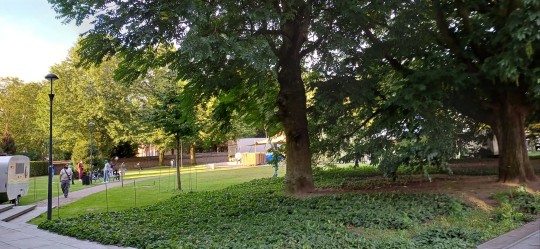
Schijt aan de Grens staat op het punt te beginnen in het Mgr. Goumanspark en omgeving.
In Overloon vindt een apart programma plaats. Tijdens de kermis is daar ingebroken in drie caravans van exploitanten.
0 notes
Text
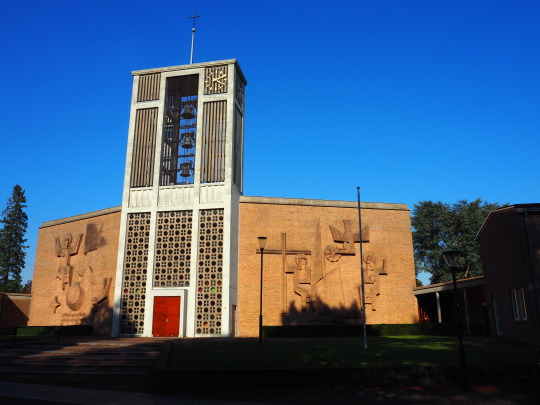
Bild des Tages: Kirche in Overloon
1 note
·
View note
Text
Camping Overloon - Leukermeer
youtube
Onze 5-sterren camping is de ideale uitvalsbasis voor uw vakantie nabij Overloon (24 kilometer). Kies voor kamperen of verblijf in een accommodatie.
0 notes
Text
7-AD – Withdrawal Behind the 82-A/B Lines December 1944
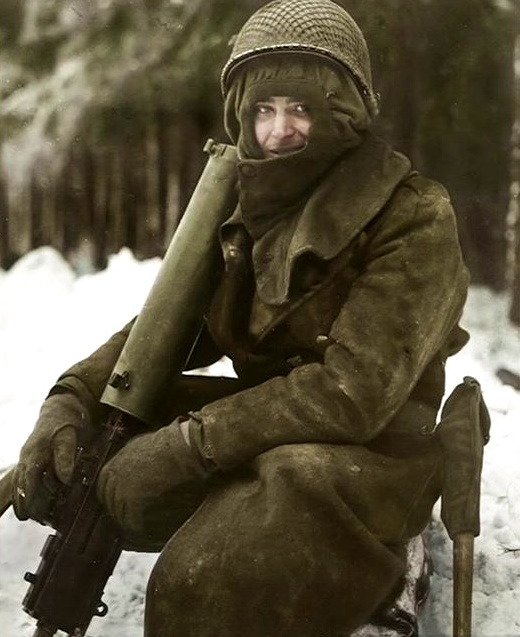
Document Source: (AAR) After Action Report (December 1944), Headquarters 7th Armored Division, December 1, 1944, – December 31, 1944, St-Vith & Vicinity, Belgium, Col John L. Ryan Jr, GSC, Chief of Staff
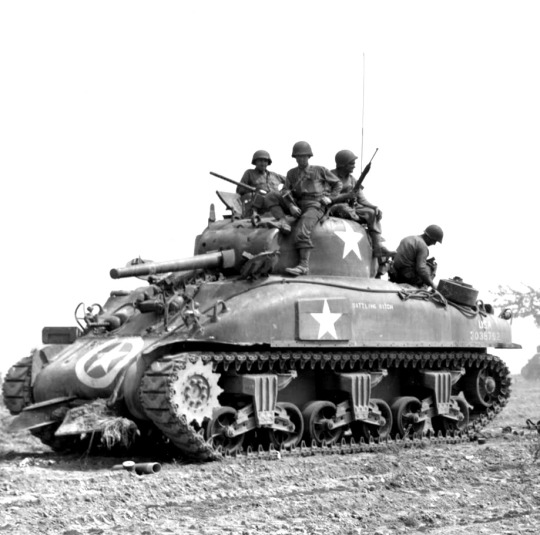
FOREWORD
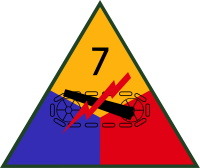

The 7th Armored Division was activated on March 1, 1942, reorganized on September 20, 1943, and sent to the United Kingdom in June 1944. The division landed in Omaha Beach and Utah Beach, on August 13/14, 1944, and was assigned to the US 3-A. The 7-AD drove through Nogent-le-Rotrou in an attack on Chartres which fell on August 18. From Chartres, the Division advanced to liberate Dreux, then Melun where the division crossed the Seine River on August 24. The 7-AD then pushed on to bypass Reims, liberated Château-Thierry and Verdun, August 31, halted briefly for refueling until September 6, when it drove toward the Moselle River and made a crossing near Dornot. This crossing had to be withdrawn in the face of the heavy fortifications around Metz.
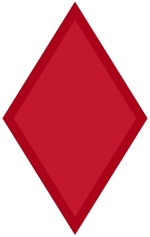

The 7-AD then made attempts to cross again the Moselle River northwest of Metz but the deep river valley was not suitable terrain for an armored attack. Elements of the division assisted the 5th Infantry Division in expanding a bridgehead east of Arnaville, south of Metz, and on September 15, the main part of the division crossed the Moselle. The 7-AD was repulsed in its attacks across the Seille River at and near Sillegny, part of an attack in conjunction with the 5-ID that was also repulsed further north. On September 25, the 7-AD was transferred to the US 9-A and began the march
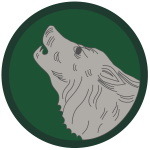
to the Netherlands where they were needed to protect the right (east) flank of the corridor opened by Operation Market Garden. They were to operate in southeastern Holland so that British and Canadian forces and the US 104th Infantry Division could clear the Germans from the Scheldt Estuary in the southwest Netherlands and open the shipping lanes to the critical port of Antwerp, to allow Allied ships to bring supplies from Britain.
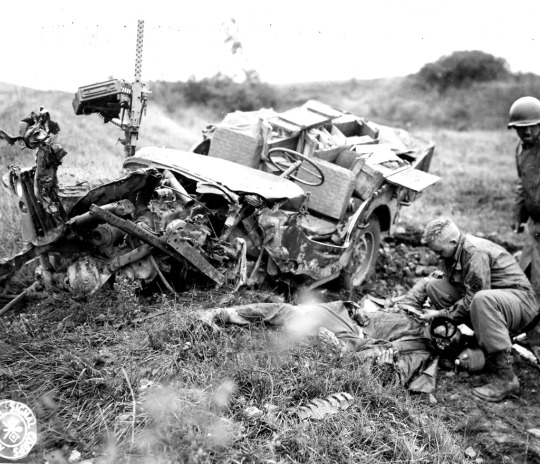
In September 1944, the 7-AD launched an attack from the north on the town of Overloon, against significant German defenses. The attacks progressed slowly and finally settled into a series of counter-attacks reminiscent of World War I trench warfare. On October 8, the 7-AD was relieved from the attack on Overloon by the British 11-AD and moved south of Overloon to the Deurne – Weert area. Here they were attached to the British 2-A and ordered to make demonstration attacks to the east, in order to divert enemy forces from the Overloon and Venlo areas, where British troops pressed the attack. This plan succeeded, and the British were finally able to liberate Overloon. On October 27, the main part of the 7-AD was in essentially defensive positions along the line Nederweert (and south) – Meijel – Liesel, with the demonstration force still in the attack across the Deurne Canal to the east. The Germans launched a two-division offensive centered on Meijel, catching the thinly stretched US 87-CRS (Cavalry Recon Squadron) by surprise. However, the response by the 7-AD and by the British VIII Corps to which the division was attached, stopped the German attack on the third day and from October 31 to November 8, gradually drove the enemy out of the terrain that they had taken. During this operation, at midnight on the night of October 31 – November 1, Gen Robert D. Hasbrouck replaced Gen Lindsay Silvester as Commanding General of the division. On November 8, the 7-AD was again transferred back to the US 9-A and moved south to rest areas in the eastern vicinity of Maastricht. Following an inflow of many replacements, they began extensive training and reorganization, since so many original men had been lost in France and Holland that a significant part of the division was now men who had never trained together. At the end of November, the division straddled the Dutch-German Border with one combat command in Germany (in the area of Ubach–Palenberg, north of Aachen) and two in the Netherlands. Elements of the division were attached to the US 84th Infantry Division for operations in early December in the area of Linnich, Germany, on the banks of the Roer River.
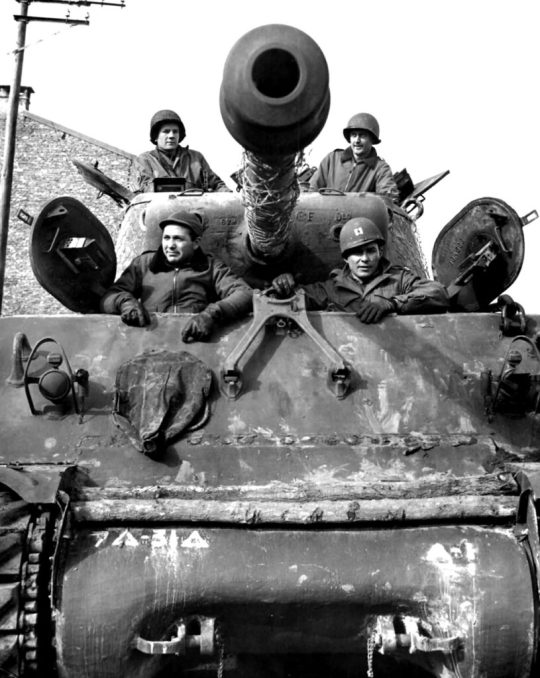
DECEMBER 1, 1944 On December 1, the division order of battle was as follows: CCA – 48th Armored Infantry Battalion – Able Co, 33rd Armored Engineer Battalion – Dog Co, 87th Cavalry Recon Squadron Mecz CCB – 23rd Armored Infantry Battalion – 31st Tank Battalion – Baker Co, 33rd Armored Infantry Battalion – Baker Co, 87th Cavalry Recon Squadron Mecz – Dog Co, 203rd AAA Battalion – Charlie Co, 814th Tank Destroyer Battalion – 1st Plat, Baker Co, 814th Tank Destroyer Battalion – 1st Plat, Recon, 814th Tank Destroyer Battalion CCR – 38th Armored Infantry Battalion – Baker Co, 40th Tank Battalion – Charlie Co, 33rd Armored Engineer Battalion – Ordnance Detachment – Medical Detachment Division Troops – 203rd AAA Battalion (-) – 814th Tank Destroyer Battalion (-) – 33rd Armored Engineer Battalion (-) – 87th Cavalry Recon Squadron Mecz Division Trains – 129th Ordnance Maintenance Company (-) – 77th Armored Medical Battalion (-) – 446th Quartermaster Truck Company (-) – 3967th Quartermaster Troop Transport Company (-) – Baker Co, 203rd AAA Battalion Division Artillery was under XIII Corps control and consisted of: – 434th Armored Field Artillery Battalion – 440th Armored Field Artillery Battalion – 489th Armored Field Artillery Battalion – Able Co and Charlie Co, 203rd Antiaircraft Artillery Battalion Attached to the division were the: – 814th Tank Destroyer Battalion – 203rd Antiaircraft Artillery Battalion – 446th Quartermaster Trucking Company – 3967th Quartermaster Troop Transport Company Detached from the division were the: – 17th Tank Battalion (attached to the 102-ID) – 40th Tank Battalion (-) Baker & Dog Cos (attached to the 84-ID)
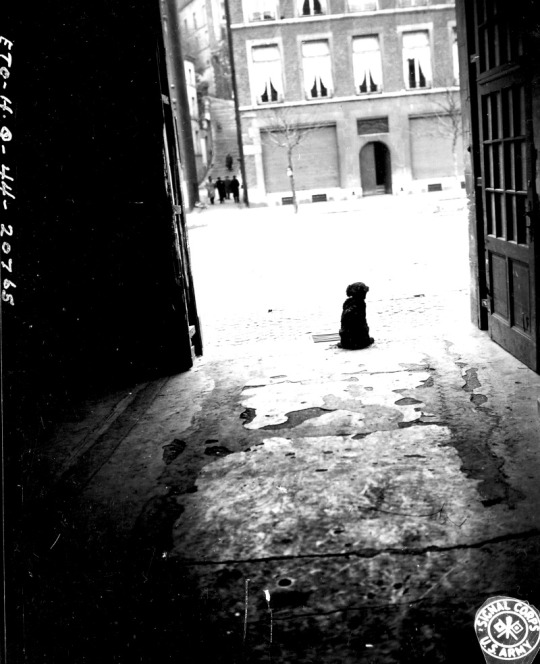

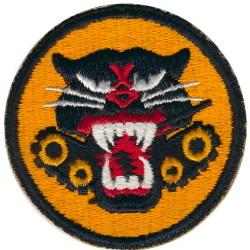
(CCR/7-AD), commanded by Col John L. Ryan Jr, was in the vicinity of Ubach, Germany, on December 1, 1944. The only divisional unit in action under division command was Baker Co 40th Tank Battalion which was supporting the 84th Infantry Division's operations in the vicinity
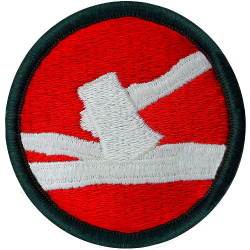
of Lindern. Able Co 40-TB was holding Lindern with elements of the 84-ID. Baker Co 40-TB was sent in to reinforce it. Due to enemy artillery concentrations on the supply route, supplies were brought to the two companies by means of the Blue Ball Express, an innovation using the light tanks of Dog Co 40-TB to bring up trailer loads of rations and ammunition under the cover of darkness.


(CCB/7-AD) under the command of Col Bruce C. Clarke, was alerted to move east of the Wurm River, Germany, to assemble at Gereonsweiller. The mission was to attack southeast from Lindern and to seize Linnich by passing through the 84-ID and 102-ID. The 814-TDB was to support the attack. However, due to the progress of the infantry divisions, it was not necessary

to commit CCB. (CCA/7-AD) under Col Dwight A. Rosenbaum, located in the vicinity of Heerlen, Holland, was undergoing a training and maintenance program pending operations to the east.

DECEMBER 2, 1944


The Division Tactical Headquarters was established at Rimburg, Holland. CCB 7-AD moved east of the Wurm River. This placed two combat commands east of that river, prepared for immediate operations to the east, northeast, or north. At 0115, the elements of the 40-TB which had been attached to the US 84-ID were relieved from such attachment. Baker 40-TB was then attached to the US 84-ID. While prepared to repel any enemy counter-attacks, the division units continued with training and maintenance programs.

DECEMBER 3, 1944


At 1200, the 17-TB was relieved from attachment to the US 102-ID and returned to CCR 7-AD control. Proposed operations to the east were dependent upon the destruction of the enemy-held Roer River Dams, south of Düren. The enemy was capable of countering an Allied offensive in this area by flooding the Roer River Valley. This would result in either destruction of the troops in the flooded region or the cutting off of our supply lines. To eliminate this threat, Allied air forces made


several attempts to destroy the dam by bombing. The first attempt was made on December 3. While training and maintenance continued for the division as a whole, various divisional units were in action while under attachment to other commands. Baker Co 40-TB was attached to the US 84-ID from December 2, 1944, at 2230 to December 6, 1944, at 1600. Charlie Co 38-AIB

was also under attachment to the US 84-ID from December 3, 1944, at 2100 to December 6, 1944, at 1800. The 48-AIB was attached to the US 102-ID from December 5, 1944, at 1400 to December 9, 1944, at 2400 and the 17-TB was attached to the US 84-ID from December 9, 1944, at 1400 until December 16, 1944, at 2000.

During the period, detailed plans were made for seizing the town of Brachelen. The town was defended by the German 694.Infantry-Regiment, the 695.Infantry-Regiment and the 696.Infantry-Regiment from the 340.Infantry-Division. The attack was dependent upon the destruction of the Roer River Dams which would isolate the town. When one of the dams was broken it would take from 4 to 5 1/2 hours for the crest of the flood to reach Brachelen, and as the dam could not be bombed before 1000, the attack was to be launched the day after the destruction of the dam. CCB 7-AD was assigned the job of taking Brachelen. The plan of attack was outlined in Operations Instructions on December 11, at 0900, known as plan Dagger. CCA 7-AD was to move east of the Wurm River after CCB’s attack. Both combat commands were constituted as follows: CCA – 40th Tank Battalion – 48th Armored Infantry Battalion – Able Co, 33rd Armored Engineer Battalion – Dog Co, 87th Cavalry Rcn Squadron (Mecz) – Able Co, 814th Tank Destroyer Battalion – 1st Co, Recon, 814th Tank Destroyer Battalion – Detachment, 77th Armored Medical Battalion CCB – 23rd Armored Infantry Battalion – 31st Tank Battalion – 38th Armored Infantry Battalion – Baker Co, 33rd Armored Engineer Battalion – Baker Co, 87th Cavalry Recon Squadron (Mecz) – Charlie Co, 814th Tank Destroyer Battalion – 1st Plat, Baker Co, 814th Tank Destroyer Battalion – Detachment, 129th Ordnance Battalion – Dog Co, 203rd Antiaircraft Artillery Battalion – Detachment, 77th Armored Medical Battalion CCR – 1 Squadron Recon, 814th Tank Destroyer Battalion – Charlie Co, 33rd Armored Engineer Battalion

DECEMBER 10 Today, Col Bruce C. Clarke, Commanding CCB 7-AD, was promoted to brigadier general. At 1000, CCB 7-AD was placed in the Corps reserve. DECEMBER 11 At 1500, CCB was released from the Corps Reserve and replaced by CCA 7-AD. DECEMBER 13 Division Main Headquarters moved from Robroek to Heerlen, Holland, while the rest of the division continued training and maintenance, pending the destruction of the Roer River dam and the beginning of the operations Dagger. DECEMBER 16

Read the full article
#104thInfantryDivision#23rdArmoredInfantryBattalion#3-A(US)#38thArmoredInfantryBattalion#40thTankBattalion#422ndInfantryRegiment#423rdInfantryRegiment#424thInfantryRegiment#48thArmoredInfantryBattalion#5thInfantryDivision#7thArmoredDivision#811thTankDestroyerBattalion#814thTankDestroyerBattalion#84thInfantryDivision#87thCavalryReconSquadron#Aachen#Antwerp#Arnaville#Aywaille#Bastogne#Beho#Born#Bovigny#Braunlauf#BritishForces#CanadianForces#CCB-7-AD#Chartres#ChateauThierry(France)#Cherain
0 notes




